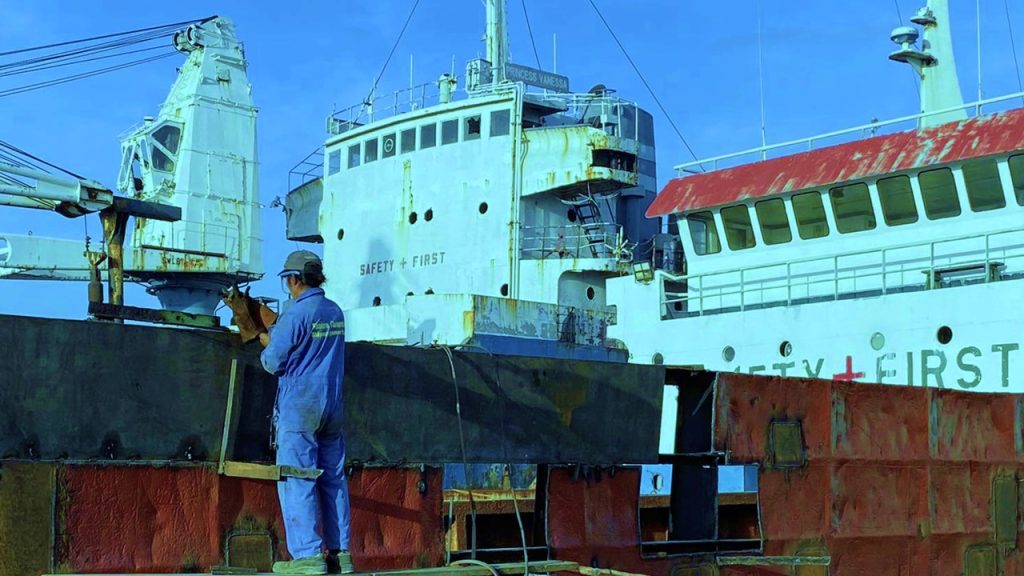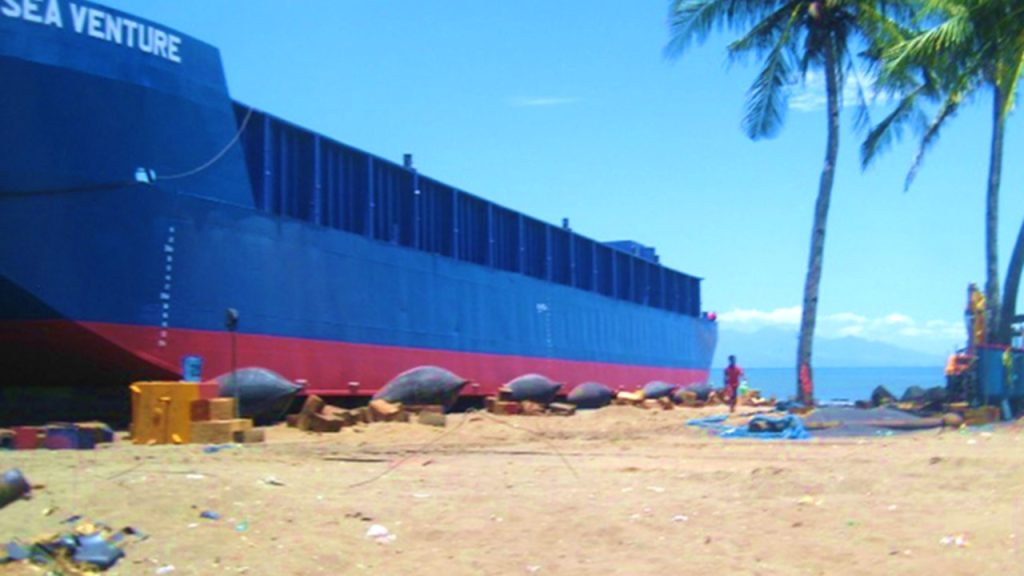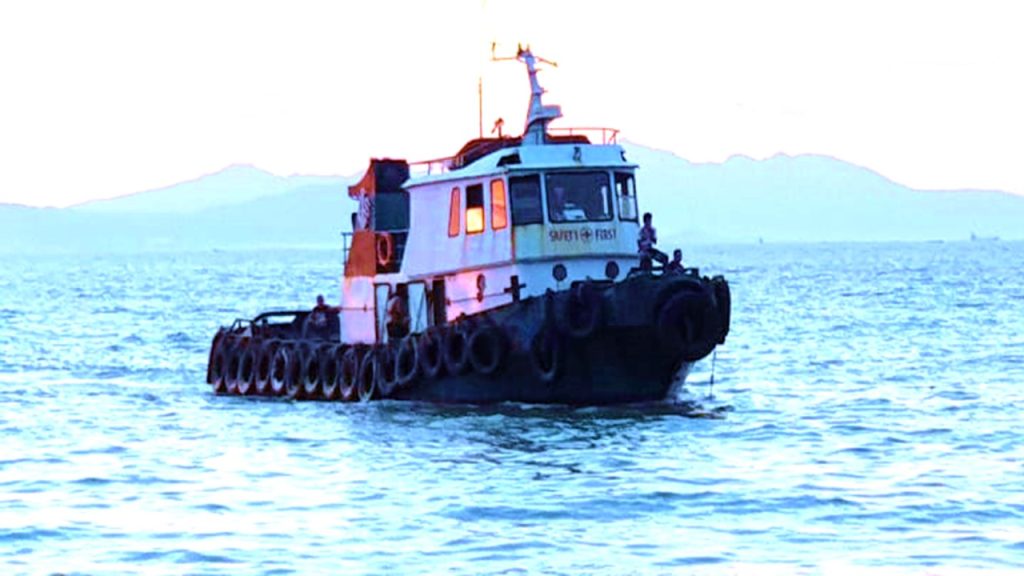In the vast archipelago of the Philippines, where waterways and oceans intertwine, shipbuilding has been an integral part of its maritime heritage. Amongst the various vessels that have been crafted with precision by Filipino shipbuilders, barges stand tall as versatile workhorses for transporting goods and materials across rivers, seas, and even through shallow waters. As we step into the year 2023, this ultimate guide on constructing barges delves into the artistry and ingenuity of Filipino shipbuilders who have perfected their craft over generations. From selecting materials to mastering construction techniques, this article unveils the secrets behind creating these sturdy vessels that have become an essential component in global trade and transportation networks.
Click here to view to understand our shipbuilding capabilities in constructing barges in Tanza, Cavite, Philippines.
The Definition: What are Barges?
Barges are flat-bottomed boats primarily used for the transportation of heavy cargo over water. Unlike traditional ships, barges in the Philippines do not have their own propulsion system and are usually towed or pushed by tugboats. They are designed to carry large and bulky items that cannot be easily transported by road or rail.
One interesting aspect of barges is their versatility. They can be customized and modified to suit specific requirements, making them ideal for a wide range of industries such as construction, mining, and oil drilling. Barges can be equipped with cranes, ramps, or specialized compartments to handle different types of cargo.
Another unique feature of barges is their cost-effectiveness. Due to their simple design and lack of propulsion systems, they are relatively inexpensive to build and maintain compared to other types of vessels. Additionally, since they rely on tugs for transportation, they offer significant fuel savings compared to self-propelled ships.
Overall, barges play a crucial role in the global economy by enabling the efficient transport of goods across waterways. Whether it’s carrying construction materials for infrastructure projects or transporting natural resources from remote locations, these versatile vessels continue to make maritime logistics more accessible and sustainable in today’s interconnected world.

The Importance of Constructing Barges in the Philippines
The Philippines, known for its rich maritime history and abundant natural resources, is strategically positioned as an ideal location for constructing barges. Barges are commonly used in transporting heavy goods and commodities across rivers and bodies of water. With the country boasting an intricate network of rivers and a vast coastline spanning thousands of kilometers, the construction of barges in the Philippines serves as a crucial catalyst for economic growth and trade.
Investing in local barge construction not only helps stimulate employment opportunities but also opens doors for innovation and technological advancements within the industry. By tapping into the country’s skilled workforce, there is ample opportunity to develop expertise in barge design, manufacturing processes, materials selection, and quality control. Furthermore, constructing barges locally reduces dependence on foreign imports and creates a self-sustaining ecosystem that can cater to both domestic demands as well as potential export markets.
Moreover, constructing barges in the Philippines promotes sustainable practices within the industry. The Philippines is renowned for its commitment to environmental conservation; therefore, incorporating eco-friendly designs during barge construction can greatly minimize carbon emissions from transport activities. Additionally, by choosing eco-conscious materials such as recycled steel or adopting cleaner energy sources like solar power or liquefied natural gas (LNG), these locally-built barges can set new standards for sustainability in marine transportation globally.
While acknowledging the importance of constructing barges in any maritime nation’s economy, it becomes evident that this endeavor holds significant value when executed within the Philippine context.

Growing Demand for Barges in the Philippine Maritime Industry
The Philippine maritime industry is experiencing a growing demand for barges, and it’s no surprise, given the country’s archipelagic nature. With over 7,000 islands, transporting goods and people through waterways has become increasingly important. To meet this demand, Filipino companies are constructing barges at an unprecedented rate. These sturdy flat-bottomed vessels have proved vital in supporting various sectors such as construction, oil and gas exploration, and mining operations, among others.
One driver behind the increased demand for barges is the ongoing infrastructure development across the Philippines. With numerous road and bridge projects underway throughout the nation, there is a significant need to transport heavy equipment and construction materials to various sites. Barges offer an efficient solution by allowing transportation along rivers and coastal areas that are not accessible by land or traditional ships.
Furthermore, the expansion of offshore drilling activities in the South China Sea has added momentum to barge demand. The country’s rich natural resources attract multinational corporations looking to tap into its energy reserves. These offshore ventures require large equipment and supplies that often exceed what conventional ships can accommodate. As a result, businesses turn to barges as an optimal choice due to their ability to carry heavy loads while ensuring stability during sea travel.
The growth of the Philippine maritime industry relies heavily on these versatile floating platforms as they provide cost-effective solutions for transporting goods crucial to national development efforts.
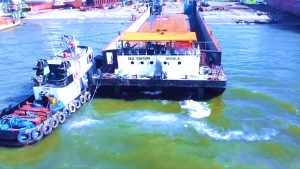
Historical Overview of the Filipino Shipbuilding Industry
Filipino shipbuilding has a long and storied history that dates back to ancient times. Before the arrival of the Spaniards in the 16th century, indigenous Filipinos were already skilled in constructing barges known as balangay. These wooden vessels played a crucial role in fishing, trading, and even warfare. The craftsmanship of these early shipbuilders showcased their knowledge of naval architecture and ability to navigate the challenging waters surrounding the archipelago.
During Spanish colonization, shipbuilding in the Philippines grew in prominence as galleons were constructed to facilitate trade between Manila and Acapulco. The skills passed down through generations became more refined, incorporating European techniques and technologies. Filipino shipbuilders gained international recognition for their expertise, attracting foreign investors seeking sturdy and reliable vessels.
Today, Filipino shipbuilders continue to make significant contributions to the industry. With their expertise now spanning from luxury yachts to offshore platforms and commercial carriers, they have proven themselves adaptable to modern demands while still paying homage to their rich maritime heritage. As the industry evolves with new technology and environmental concerns becoming more prominent, its historical foundation lays a solid framework for future growth. The legacy of Filipino shipbuilding continues to flourish as its craftsmen combine traditional methods with innovation – truly sailing towards a bright horizon.
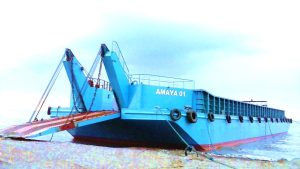
Understanding the Different Types of Barges and Their Uses
Whether you’re transporting goods, dredging waterways, or constructing bridges over rivers, barges play a crucial role in various industries in the Philippines. While all barges share the same basic design – a flat-bottomed vessel used for carrying heavy cargo – they come in different types, each with its own unique features and uses.
One type of barge commonly used for construction projects is the crane barge. Equipped with cranes that can lift and move heavy materials, these barges are perfect for tasks such as building bridges or installing offshore oil rigs. Another type of barge frequently utilized in construction is the derrick barge. These specialized barges have tall masts with cables and pulleys, allowing them to handle drilling operations or lift large objects out of the water.
In addition to construction purposes, there are also barges specially designed for transporting liquid cargo, known as tank barges. These vessels typically consist of multiple compartments that can carry various liquids such as oil, chemicals, or even potable water. These tank barges are indispensable for industries like petroleum and chemical transportation. Understanding the different types of barges helps us appreciate their versatility and how they enable crucial operations across different sectors of our economy.
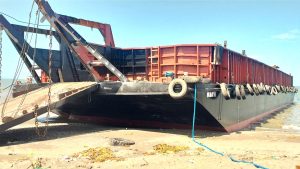
The Step-By-Step Guide to Constructing Barges in the Philippines
Barges are large flat-bottomed boats that are typically used for transporting goods and cargo along rivers, canals, and coastal waters. They are an essential part of the maritime industry, contributing to economic development and trade by providing a cost-effective means of transportation. Constructing barges in the Philippines requires a combination of engineering expertise, precision craftsmanship, and an understanding of the unique challenges associated with building vessels that can navigate shallow waters and carry heavy loads.
One key aspect in constructing barges in Cavite, Manila, Cebu, and Subic Bay is ensuring their durability and strength to withstand the rigorous demands of heavy cargo transportation. The materials used in constructing these vessels must be carefully selected to provide maximum resistance against corrosion and fatigue while maintaining structural integrity. Filipino shipbuilders have gained recognition for their expertise in this area, often using advanced materials like high-tensile steel to build robust barges capable of hauling substantial loads over long distances.
The importance of constructing quality barges extends beyond just their ability to transport goods efficiently. Barges play a significant role in reducing road congestion by diverting heavy freight from highways onto waterways. This not only helps alleviate traffic congestion but also reduces carbon emissions associated with truck transport. In addition, they support local economies by providing job opportunities for shipbuilders and crew members who operate these vessels. As such, the construction of barges serves both practical purposes related to trade expansion as well as environmental benefits linked to sustainable shipping practices.

Planning and Design: Determining Specifications, Materials, and Layout
Planning and designing a barge is the crucial first step in turning an idea into a reality. Shipbuilders must carefully determine specifications, materials, and layout to ensure the final product meets all requirements. When it comes to specifications, factors such as load capacity, dimensions, and propulsion systems must be taken into account. These specifications will ultimately guide the entire construction process.
Choosing the right materials is equally important when it comes to barge construction. The selection of materials will depend on various factors, including budget, the intended use of the barge, and environmental considerations. Steel is often chosen for its strength and durability while being cost-effective over the long term. However, other options, such as aluminum or fiberglass, may also be considered depending on specific needs.
Layout plays a pivotal role in maximizing the functionality and efficiency of a barge. In addition to meeting safety regulations, designers must consider how spaces can be optimized for storage areas, crew quarters, machinery spaces, and other key compartments. Every square inch should be utilized intelligently to ensure that the barge not only performs well but also provides comfortable living conditions for those onboard during extended voyages or stays.
Careful planning and design are vital when constructing barges in Batangas, Navotas, Davao, and General Santos.

Obtaining Permits and Licenses: Navigating Legal Requirements For Constructing Barges
Obtaining permits and licenses is a crucial step in any construction project, especially when it comes to building barges. In the Philippines, shipbuilders must navigate through a complex web of legal requirements to ensure compliance and smooth operation. From securing environmental clearances to obtaining zoning permits, each step requires careful attention and documentation.
One key aspect that shipbuilders need to consider is the Environmental Compliance Certificate (ECC). This certificate ensures that the construction of barges adheres to environmental standards set by the government. Shipbuilders must submit an Environmental Impact Assessment (EIA) report, which assesses potential impacts on air, water, and soil quality, as well as social and economic conditions. Obtaining an ECC can be time-consuming and requires involvement from various stakeholders such as local communities, NGOs, and relevant government agencies, but it is essential for sustainable barge construction.
Another important license needed for constructing barges is a Building Permit. This permit verifies that the design and plan comply with safety regulations and meet structural requirements. It involves submitting detailed architectural plans and engineering calculations for review by local Philippine authorities like the MARINA. While this process may seem tedious, it ensures that barges are constructed with precision and adhere to safety standards set forth by national building codes.
Navigating the legal requirements for constructing barges in the Philippines can be complex, but understanding the significance of permits and licenses helps prevent delays or complications in future operations.
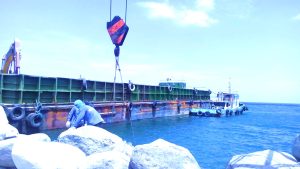
Construction Process: Step-by-Step Guide to Constructing Barges
First and foremost, the construction of a barge in the Philippines begins with meticulous planning and design. Shipbuilders carefully conceptualize every aspect, from the overall shape and size to the structural components and materials to be used. This stage involves collaboration between engineers, naval architects, and other specialized professionals to ensure that the barge will meet its intended purpose.
Once the design is finalized, the building process commences with preparing a solid foundation for construction. This typically involves creating a dry dock or slipway where the barge can be built safely. In some cases, a makeshift platform may be constructed on land or even in shallow waters to serve as the base for assembly. Proper alignment and leveling are crucial at this stage, as any inaccuracies could lead to problems later on in construction.
Next comes steel fabrication which entails cutting, shaping, and welding various sections of steel together following precise measurements specified in the design plan. Skilled welders play a vital role in ensuring that all joints are tightly connected and reinforced for maximum strength and durability. Once completed, stringent quality control measures like x-ray inspections are carried out to identify any structural defects before proceeding further.
Overall, constructing a barge requires careful planning, precise execution of designs, and expert craftsmanship. Each step in the process plays an essential role in shaping a vessel that will withstand harsh marine conditions while efficiently serving its intended purpose.
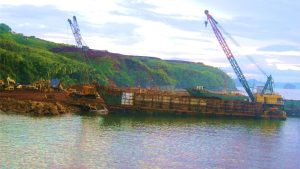
Safety Measures: Ensuring Filipino Worker Safety During Construction
Ensuring worker safety is of utmost importance during any construction project, and building barges is no exception. The nature of the work involved in constructing barges in the Philippines can be hazardous, with risks ranging from falls and slips to dangerous equipment handling. To mitigate these risks, it is crucial for shipbuilders to prioritize safety measures and create a safe working environment.
One key safety measure during barge construction is conducting regular training sessions for all workers involved in the project. This training should cover topics such as best practices for equipment handling, proper use of personal protective equipment (PPE), and emergency response protocols. By equipping workers with the necessary knowledge and skills, shipbuilders can significantly reduce the likelihood of accidents occurring on-site.
Another vital aspect to consider when ensuring worker safety is implementing effective communication systems throughout the construction process. Clear communication channels are essential for quickly relaying information about potential hazards or changes in procedures that could affect worker safety. By using technologies such as two-way radios or mobile apps; shipbuilders can ensure that everyone on site remains informed and can promptly address any emerging safety concerns.
Prioritizing worker safety during barge construction should be a top priority for Filipino shipbuilders. Through regular training sessions and efficient communication systems, they can create a safe working environment where accidents are minimized, thus protecting their valuable workforce while contributing to successful barge construction projects.
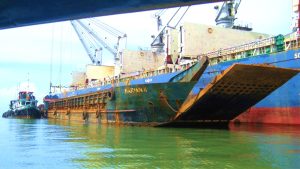
Testing and Inspection: Quality control procedures before launching the barge.
Testing and inspection are pivotal components of the quality control procedures that need to be conducted before launching a barge. Shipbuilders in Cavite, Navotas, Olongapo, Zambales, and Manila understand the crucial role these steps play in maintaining safety standards and ensuring customer satisfaction. The process involves various checks and examinations to evaluate structural integrity, performance capabilities, and adherence to design specifications.
To guarantee structural integrity, a comprehensive hull inspection is carried out on the barge. This includes checking for any defects, such as cracks or deformations, which could compromise its strength. Additionally, stress tests are performed to measure the vessel’s ability to withstand extreme conditions like turbulent waves or heavy cargo. These rigorous evaluations help shipbuilders identify any weaknesses early on in order to rectify them before launch.
Furthermore, during the testing phase, new technologies have been introduced that can enhance the efficiency and accuracy of inspections. Non-destructive testing methods such as ultrasound scanning and thermography are now widely used by Filipino shipbuilders as they provide detailed information about internal structures without damaging or altering them. These advanced techniques enable thorough examinations of welds, plates, piping systems, and other critical components to detect even the smallest abnormalities or inconsistencies. By incorporating these innovative approaches into their quality control procedures, shipbuilders can ensure higher levels of precision in barge construction.

Constructing Barges: Key Considerations
When it comes to constructing barges in Tanza, Cavite, there are several key considerations that should be taken into account. One crucial aspect is the choice of materials. Barges need to withstand harsh marine environments and heavy loads, so selecting high-quality and durable materials is essential. Filipino shipbuilders have perfected the art of using locally sourced steel and aluminum for barge construction, ensuring strength and longevity.
Another important consideration when building barges is the design and engineering expertise involved. The design must not only meet the client’s specific requirements but also take into account various factors such as stability, buoyancy, maneuverability, and safety regulations. Filipino shipbuilders have gained a reputation for their innovative designs that optimize space utilization while maintaining stability under all conditions.
Furthermore, a critical factor in constructing barges in the Philippines is project management and quality control. Shipbuilding projects demand meticulous planning, strict adherence to timelines, efficient resource allocation, and regular inspections to ensure compliance with industry standards. Filipino shipbuilders excel in project management by employing skilled personnel with vast experience in coordinating complex shipbuilding projects from start to finish.
Constructing barges in the Philippines requires careful considerations such as material selection, design expertise, project management skills, and quality control measures. By focusing on these key aspects, Filipino shipbuilders have consistently proven themselves as experts in building reliable and cost-effective barges that meet varied customer demands worldwide.
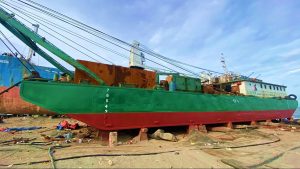
Constructing Barges: Innovations and Technologies Shaping the Philippine Maritime Industry
The construction of barges in the Philippine maritime industry has seen significant innovations and advancements in recent years. Shipbuilders have been embracing new technologies to improve efficiency, safety, and sustainability in the construction process. One such innovation is the use of modular construction methods, which allow for quicker assembly and disassembly of barges. This not only reduces construction time but also facilitates easier maintenance and repairs.
Furthermore, there has been a shift toward using eco-friendly materials in barge construction. With growing concerns about climate change and environmental impact, shipbuilders are incorporating sustainable practices into their operations. For instance, composite materials made from recycled plastics are being used as an alternative to traditional steel structures. These lightweight yet durable materials not only reduce the weight of the barge but also minimize its ecological footprint.
Additionally, technology has played a crucial role in shaping the future of barge construction in the Philippines. The use of digital design software allows for more accurate and precise modeling before starting physical production. Virtual reality simulations enable shipbuilders to detect potential issues or flaws early on, saving both time and money. Furthermore, robotics automation is becoming increasingly integrated into barge manufacturing processes, streamlining production while ensuring high-quality standards.
The Philippine maritime industry is experiencing a transformative period when it comes to constructing barges in the Philippines—innovations such as modular construction methods, eco-friendly materials, and advanced technologies are driving progress in this sector.
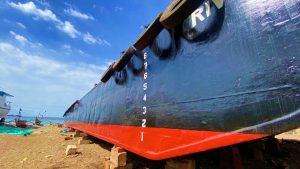
Skills and Expertise Required for Filipino Shipbuilders in Constructing Barges
For Filipino shipbuilders engaged in constructing barges, a diverse set of skills and expertise is required to ensure the successful completion of these complex vessels. Firstly, a comprehensive understanding of naval architecture is crucial. Shipbuilders must possess knowledge in structural design, stability calculations, and hydrodynamics to develop barge designs that not only meet industry standards but can also withstand various maritime conditions.
In addition to engineering know-how, shipbuilders need strong technical skills in welding and fabrication. Barges are often constructed using steel materials and require precise welding techniques to ensure structural integrity. Filipino shipbuilders have gained recognition for their mastery of welding skills, making them highly sought after by international clients.
Moreover, project management skills play a significant role in overseeing barge construction projects from conception to delivery. Shipbuilders must be adept at managing resources efficiently, coordinating with subcontractors or suppliers as needed, and adhering to timelines and budgets while ensuring high-quality output throughout the process.
By continuously honing these essential skills and expertise areas, Filipino shipbuilders can maintain their position as leading contributors to the global maritime industry’s growth in barge construction. Their commitment to excellence ensures that they remain competitive while demonstrating their craftsmanship on both local and international platforms.

Challenges and Opportunities for Filipino Shipbuilders in Constructing Barges
Challenges and opportunities abound for Filipino shipbuilders as they navigate the world of constructing barges. One of the biggest challenges they face is fierce competition from other global players in the shipbuilding industry. Countries like China and South Korea have established themselves as dominant forces, with advanced technology and economies of scale working in their favor.
However, amidst these challenges lies a wealth of opportunities for Filipino shipbuilders. One key opportunity is the increasing demand for environmentally friendly barges. As sustainability becomes a top priority in the shipping industry, there is a growing need for vessels that minimize fuel consumption and reduce emissions. Filipino shipbuilders can leverage their expertise in creating eco-friendly solutions to meet this demand, potentially gaining a competitive edge over larger players.
Furthermore, an emerging opportunity in barge construction is customization and innovation. Many industries rely on specialized machinery or unique requirements when it comes to transporting goods via barges. Filipino shipbuilders can harness their agility and flexibility to offer tailored solutions that meet specific customer needs efficiently.
While challenges such as competition from global giants exist, Filipino shipbuilders have ample opportunities at their disposal – particularly in sustainable barge construction and customized solutions – which enable them to carve out a niche within the industry.
Are You Looking for a Shipbuilding Company to Construct Barges in the Philippines?
Amaya Dockyard & Marine Services Inc. (ADMSI) is a leading shipbuilding company in Tanza, Cavite, Philippines, that specializes in constructing high-quality barges. With years of experience in the industry, ADMSI has gained a reputation for delivering top-notch vessels that meet international standards.
- Email us: info@amayadockyard.com
- Call our 24-hour hotline: +63 917 633 0479
- Viber: +63 917 633 0479
- WhatsApp: +63 917 633 0479
- Facebook Messenger: Click here
- Click here to inquire
What sets ADMSI apart from other shipbuilders is its commitment to excellence and attention to detail. They take pride in their meticulous craftsmanship and use only the highest quality materials to ensure the durability and longevity of their barges.
Moreover, ADMSI offers a wide range of customization options to meet the unique needs and requirements of its clients. Whether you need a barge for offshore oil rig support or transportation of heavy equipment, they can tailor-make a solution that fits your specifications.
In addition to constructing new barges, ADMSI also provides repair and maintenance services for existing vessels. Their skilled team of technicians and engineers can handle any type of repair work efficiently, ensuring minimal downtime for your operations.
If you are looking for a shipbuilding company to construct barges in the Philippines, trust Amaya Dockyard & Marine Services Inc. With their expertise, commitment to quality, and dedication to customer satisfaction, they are undoubtedly the ultimate choice for fulfilling all your maritime construction needs.
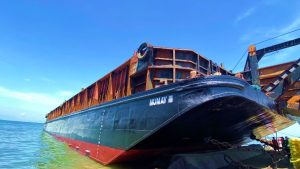
The Future of Filipino Shipbuilders in Constructing Barges
The future of Filipino shipbuilders in constructing barges looks promising as the demand for these water vessels continues to grow globally. With their expertise, skill, and cost-effective solutions, Filipino shipbuilders are becoming a preferred choice for many barge construction projects. Moreover, the advancements in technology are enabling them to ensure efficient and environmentally friendly designs.
One key advantage that sets Filipino shipbuilders apart is their ability to adapt to changing market needs. They understand the demands of clients and can tailor their construction techniques accordingly. This flexibility allows them to handle diverse requirements, whether it’s designing barges for transporting heavy cargo or constructing offshore work platforms. As globalization continues to drive economic growth and trade activities across borders, there will be an increasing need for reliable barges, presenting vast opportunities for Filipino shipbuilders.
In addition, the Philippines’ strategic location makes it an ideal hub for shipping and maritime activities. The archipelago boasts natural deep-water ports that easily accommodate large vessels and provide easy access to international shipping routes. This geographic advantage positions Filipino shipbuilders at an advantageous position in terms of timely delivery and competitive pricing. Furthermore, the country’s skilled workforce with a long history of seafaring traditions ensures quality craftsmanship in every barge constructed.
With all these factors working in favor of Filipino shipbuilders, it is no surprise that they are steadily gaining recognition in the global maritime industry. The future holds exciting prospects as they continue to innovate their techniques and stay ahead of trends.

Final Voyage: Constructing Barges – Ultimate Guide for Filipino Shipbuilders
In conclusion, constructing barges is a challenging yet rewarding endeavor for Filipino shipbuilders. With the Philippines being rich in marine resources, building barges provides an excellent opportunity for the country’s skilled workforce to showcase their expertise and contribute to local economic growth.
Throughout this ultimate guide, we have explored various aspects of barge construction, from selecting suitable materials to ensuring structural integrity and safety precautions. We have also discussed the importance of communication and collaboration among stakeholders involved in every stage of the construction process.
Filipino shipbuilders have the talent and capability to construct high-quality barges that meet international standards. By continuing to refine their skills and adapt to changing market demands, they can position themselves as leaders in the global maritime industry. As demand for barges continues to grow, Filipino shipbuilders must seize this opportunity to showcase their craftsmanship and establish themselves as trusted partners in providing efficient transportation solutions through innovative barge construction projects.

